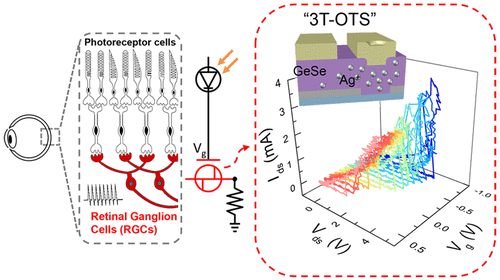The OTS is a two-pole switching device that maintains a high state
In the same study, scientists presentedmodification of the device described above - 3T-OTS. It is capable of not only responding to external stimuli, imitating the behavior of neurons, but also analyzing patterns among the huge amount of data entering the senses.
The research team was also able to createan artificial visual neuron device that mimics the way the human senses process information by combining a 3T-OTS and a photodiode. In addition, by connecting an artificial visual neuron device with an artificial neural network that mimics the visual center of the brain, the system was able to distinguish COVID-19 infections from viral pneumonia with an accuracy of about 86.5% by examining chest x-ray images.
"This is a device with artificial sensoryNeuronami is a platform technology that can implement various sensory neural devices, such as vision and touch, by connecting to existing sensors. This is a critical building block for intrasensory computing technology,” said Dr. Suyun Li, director of the Center for Neuromorphic Engineering.
 Operating principle of the device 3T-OTS
Operating principle of the device 3T-OTS
The study was conducted on the basis of the KoreanInstitute of Science and Technology. Scientists hope that the development of "artificial sensor neurons" will be the key to the practical use of sensory computing.
“The development will make a big contribution to the solutionvarious social problems related to life and safety, such as the development of a medical imaging diagnostic system that can diagnose simultaneously with examinations, the prediction of acute heart diseases through pulse and blood pressure time-series analysis, and the realization of the psychic ability to detect vibrations beyond the audible frequency to prevent accidents from building collapses, earthquakes, tsunamis, etc.,” said Dr. Suyun Li, explaining the importance of the study.
Read more:
There is another “planet” inside the Earth: how it saved nascent life
New study refutes light energy transfer theory
Scientists added silicon to a quantum computer: calculations became record-breakingly accurate